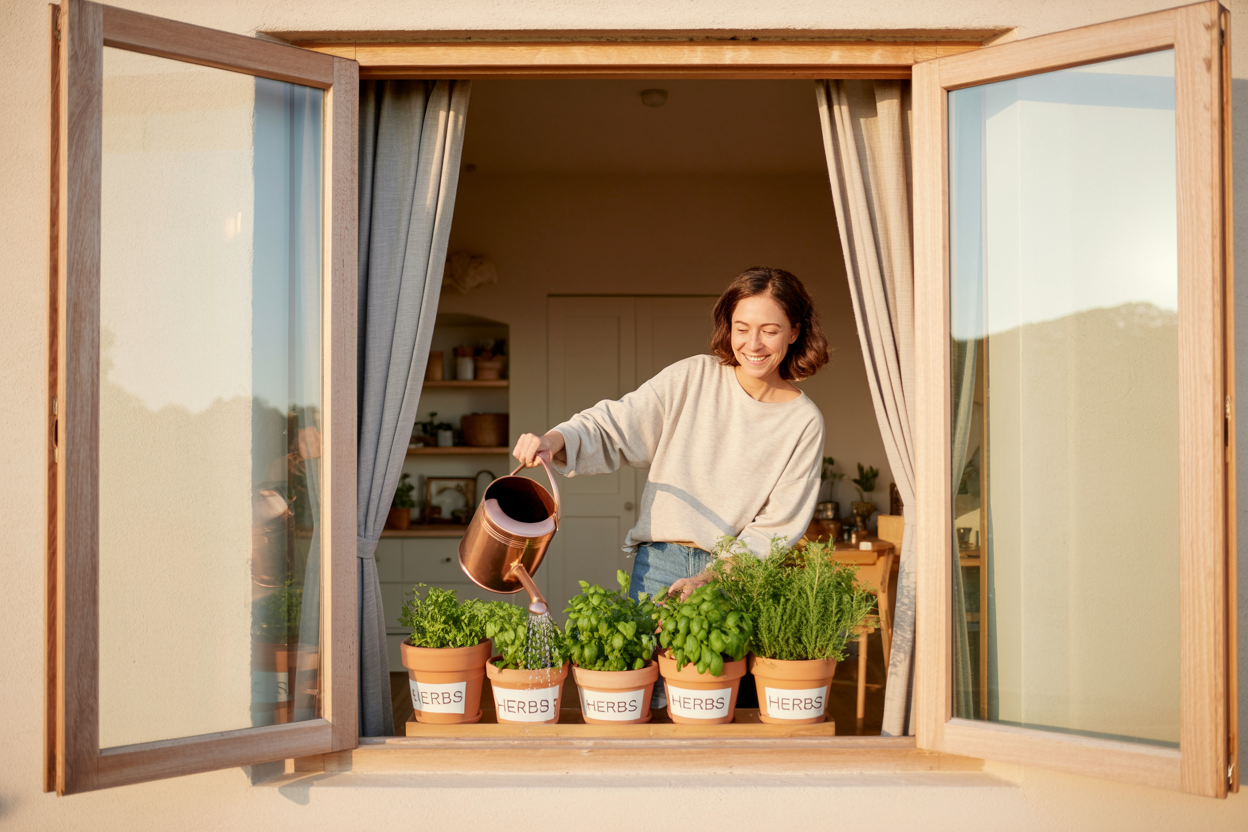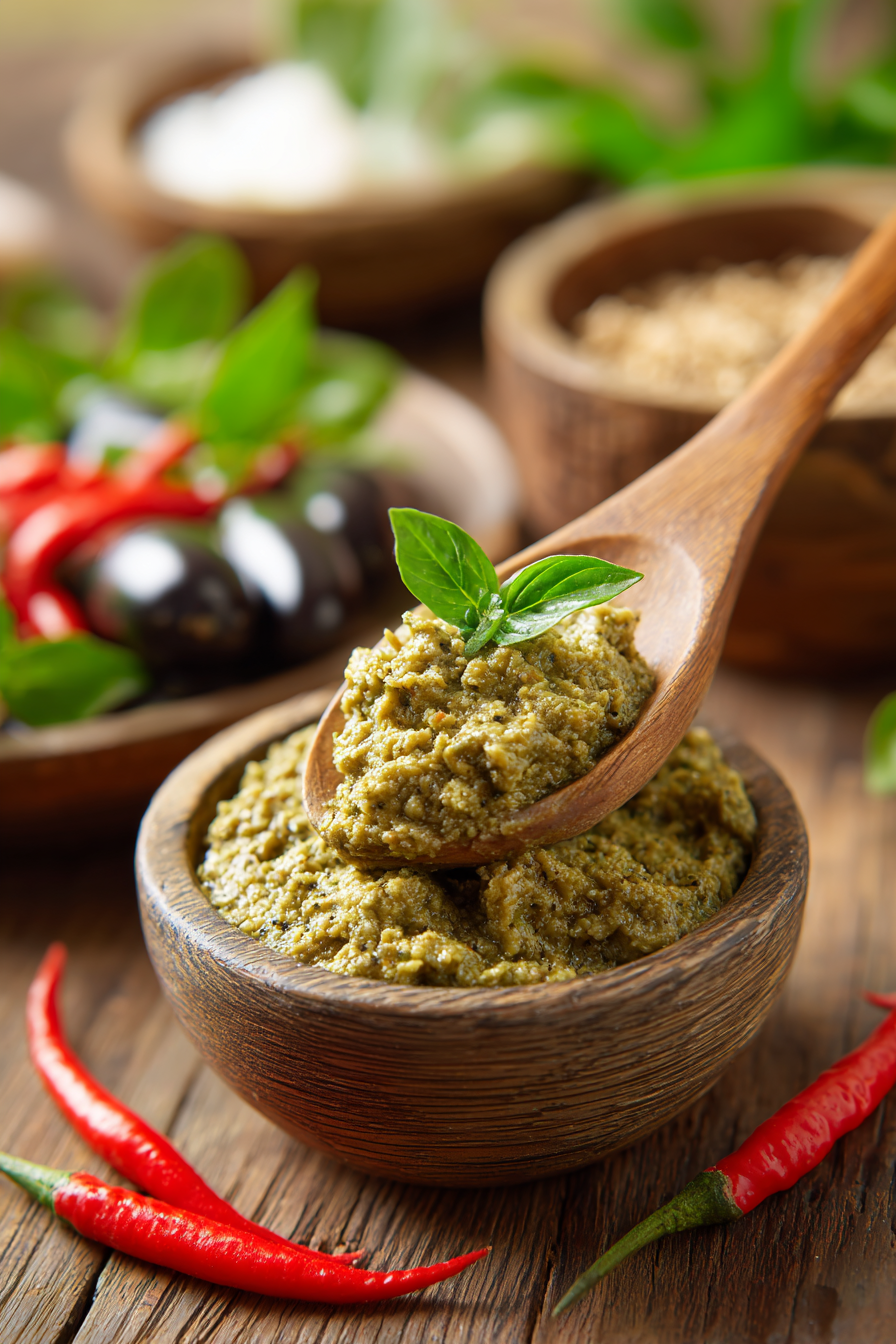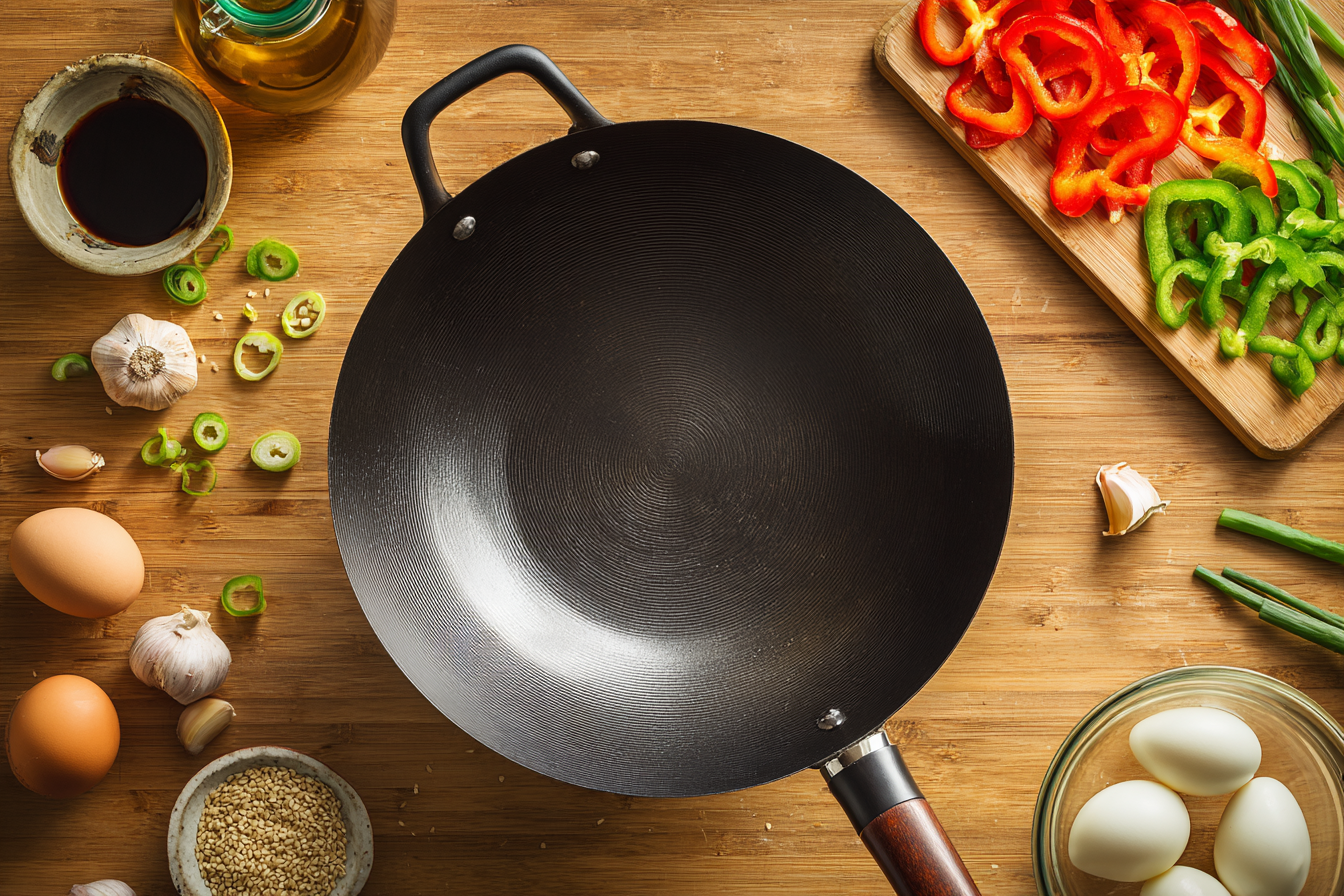🪴 7 Foolproof Steps to Starting a Thriving DIY Herb Garden in Your Apartment Kitchen
DIY herb garden apartment projects have skyrocketed in popularity, especially among urban renters craving a slice of greenery without a backyard. More than a trend, it’s a lifestyle shift: growing your own herbs at home connects you to your food, promotes sustainability, and adds daily joy—right in your kitchen.
Let’s break it down step-by-step so you can build your own thriving indoor herb garden that suits your apartment life perfectly—no backyard or fancy tools required.
🌿 Step 1: Choose the Right Herbs for Apartment Life for DIY herb garden apartment
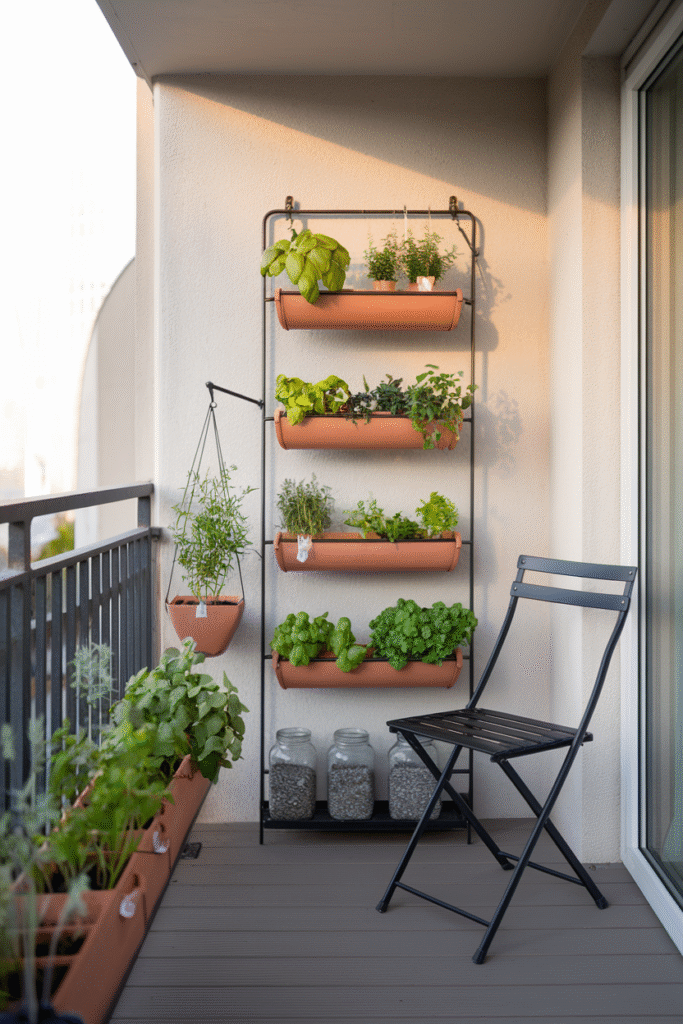
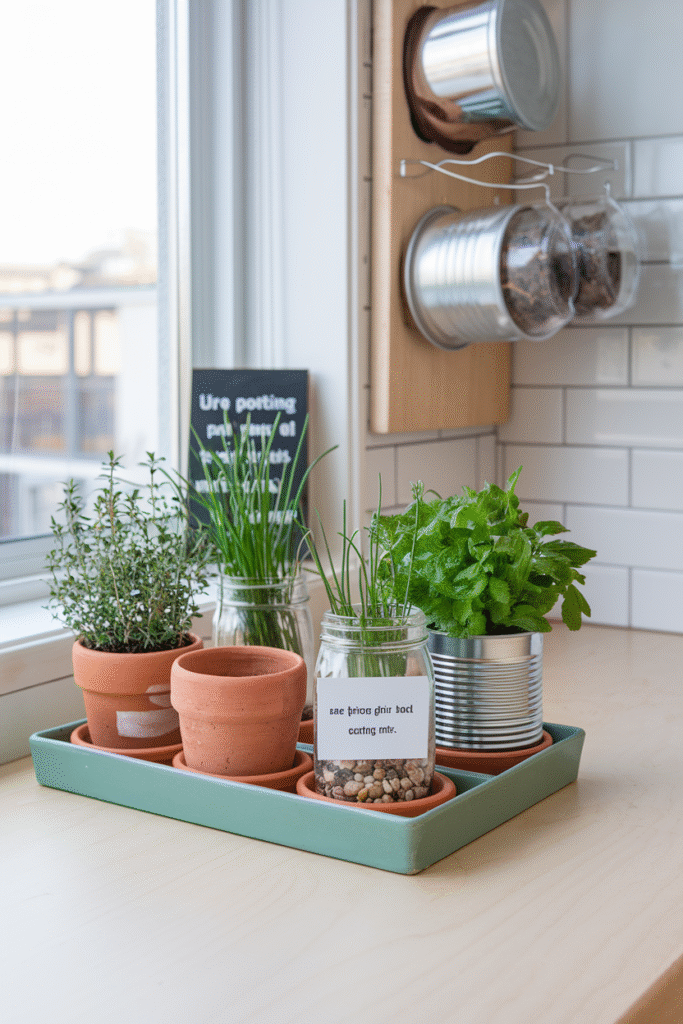
The foundation of any successful DIY herb garden apartment setup is selecting the right herbs. Not every plant thrives indoors—especially under apartment lighting or limited airflow—so choosing beginner-friendly, adaptable herbs will determine your long-term success.
🪴 Best Herbs for Indoors:
- Basil – Needs a lot of light, thrives in warmth, perfect for Italian cooking. Harvest often to keep it from bolting.
- Mint – Hardy and aromatic, but invasive—keep it in its own container!
- Parsley – Slower to sprout, but resilient. Excellent for soups, salads, and garnish.
- Thyme – Woody, compact, and fragrant. Loves sunny windowsills.
- Chives – Compact, quick-growing, and flavorful. Needs consistent moisture.
- Oregano – Great for pizza and pasta lovers. Drought-tolerant and loves indirect light.
Start with 2–3 herbs you know you’ll use. It’s easy to expand later once you’ve mastered their care routines. And remember: your apartment doesn’t need to become a jungle overnight—start simple and grow with experience.
Want to decorate sustainably? These upcycled home decor projects will pair beautifully with your indoor garden—giving your apartment charm without breaking the bank.
🌞 Step 2: Find the Perfect Spot with the Right Light for grow herbs in apartment kitchen
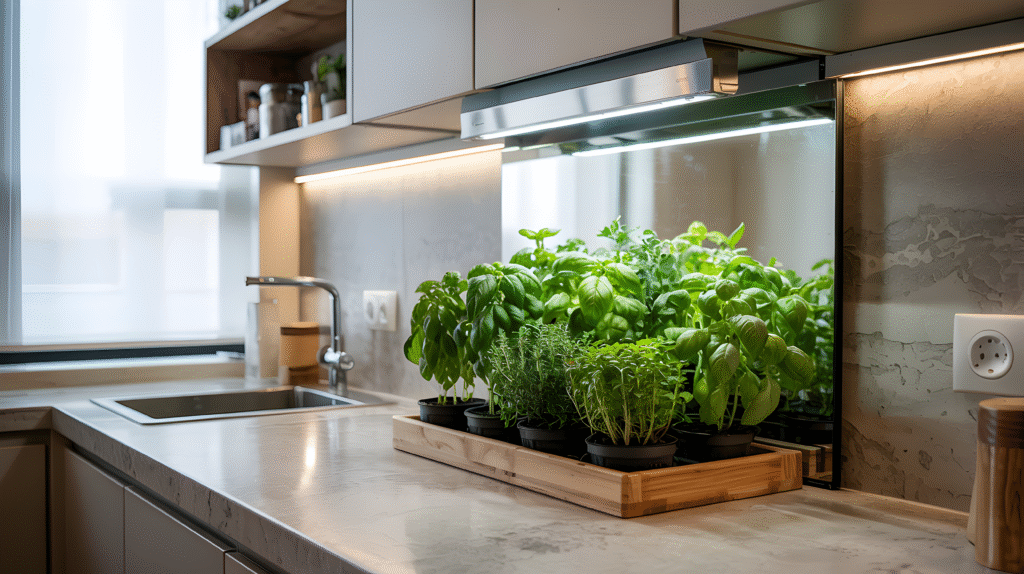
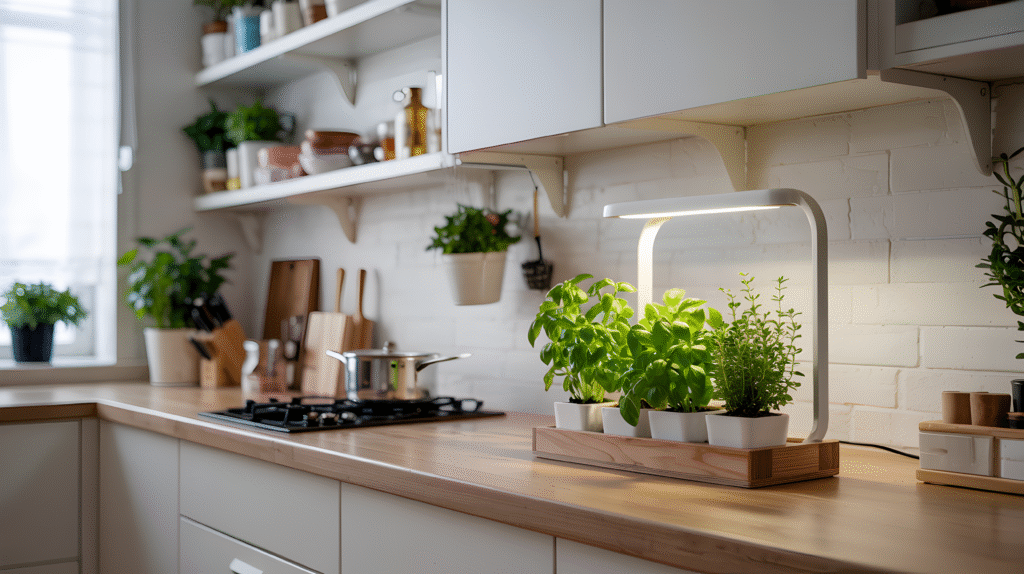
To grow herbs in apartment kitchen environments, you must understand their light needs. Most herbs are Mediterranean in origin, which means they thrive on 4–6 hours of sun per day, ideally in a south or west-facing window.
No sunny window? No problem. Here’s what to do:
- Use a full-spectrum LED grow light (many plug into USB or wall outlets)
- Hang clamp lights under upper kitchen cabinets
- Place plants on rotating trays so they lean evenly toward the light
- Use mirrors or reflective surfaces behind herbs to double light exposure
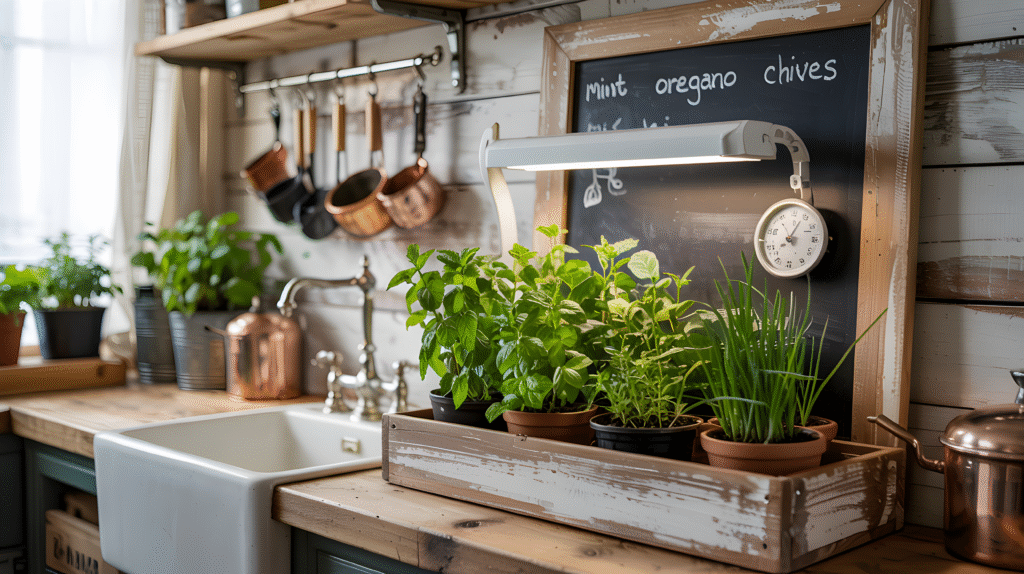
Avoid placing herbs near heat sources like ovens, stovetops, or radiators. They prefer consistent temperatures and good air circulation—think window ledges, kitchen shelves, or countertop trays.
This step is where most beginner kitchen gardening tips fail. Don’t guess—observe how much natural light your chosen spot gets throughout the day. If it’s less than 4 hours of sunlight, use a grow light from the start.
🪴 Step 3: Use the Right Containers and Soil for Indoor Success for indoor herb garden ideas
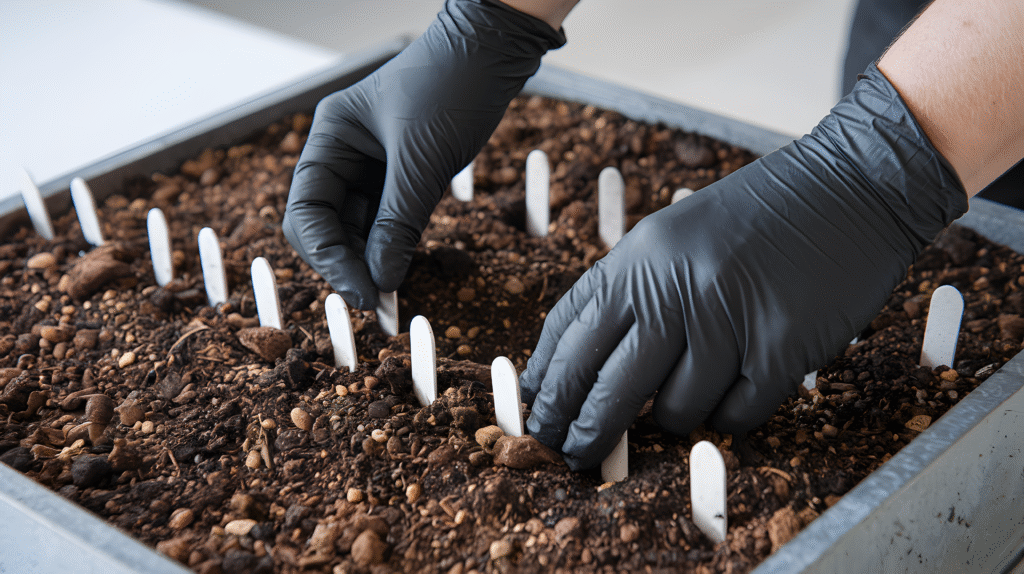
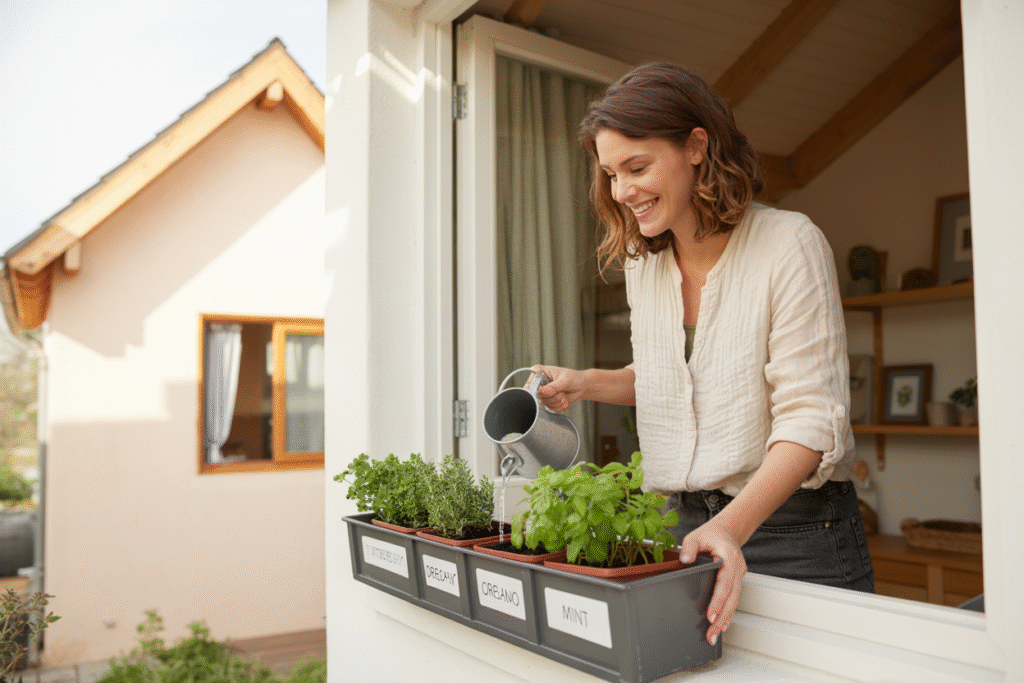
One of the most fun (and Pinterest-worthy) parts of indoor herb garden ideas is choosing containers. But don’t let aesthetics lead you into poor choices—drainage is everything.
✅ Container Tips:
- Ensure every container has a drainage hole
- Use saucers to catch excess water and protect your counters
- Choose unglazed terracotta for herbs that like drier conditions (thyme, oregano)
- Use mason jars or upcycled cans for small herbs—just add pebbles at the bottom
- Try hanging planters or a vertical garden rack if space is tight
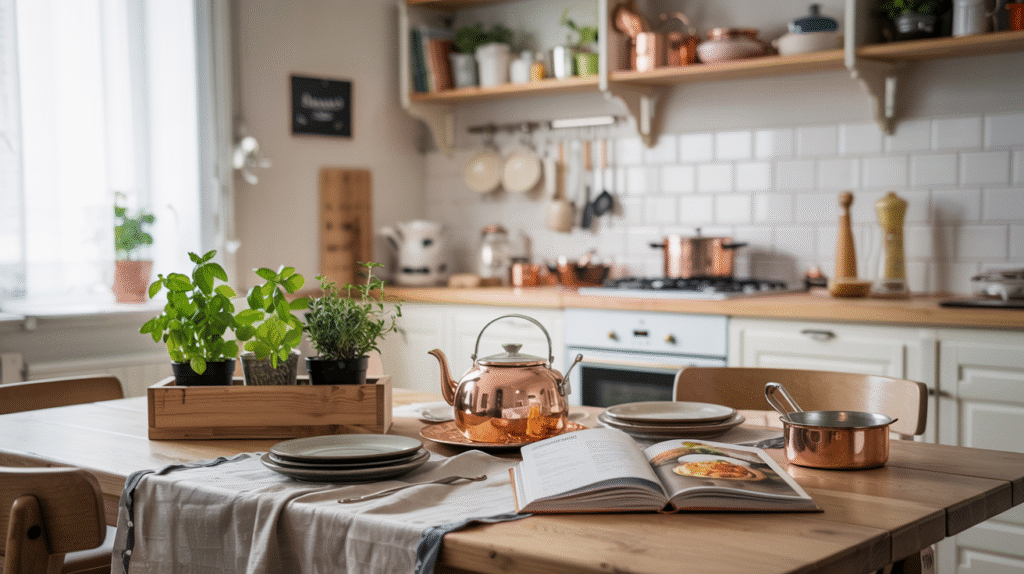
And don’t use outdoor garden soil! It’s too heavy, may contain pests, and won’t drain well. Always go with light, well-draining potting mix made for vegetables or herbs. Some even come pre-fertilized with organic nutrients.
Want next-level DIY herb garden apartment vibes? Label your pots with chalk paint or use vintage spoons as markers!
If you’re looking to upgrade your apartment without risking your deposit, don’t miss these renter-friendly decor ideas and hacks. They’re perfect companions to your DIY herb garden apartment setup.
💧 Step 4: Learn How to Water Herbs Correctly (and Avoid the #1 Mistake)
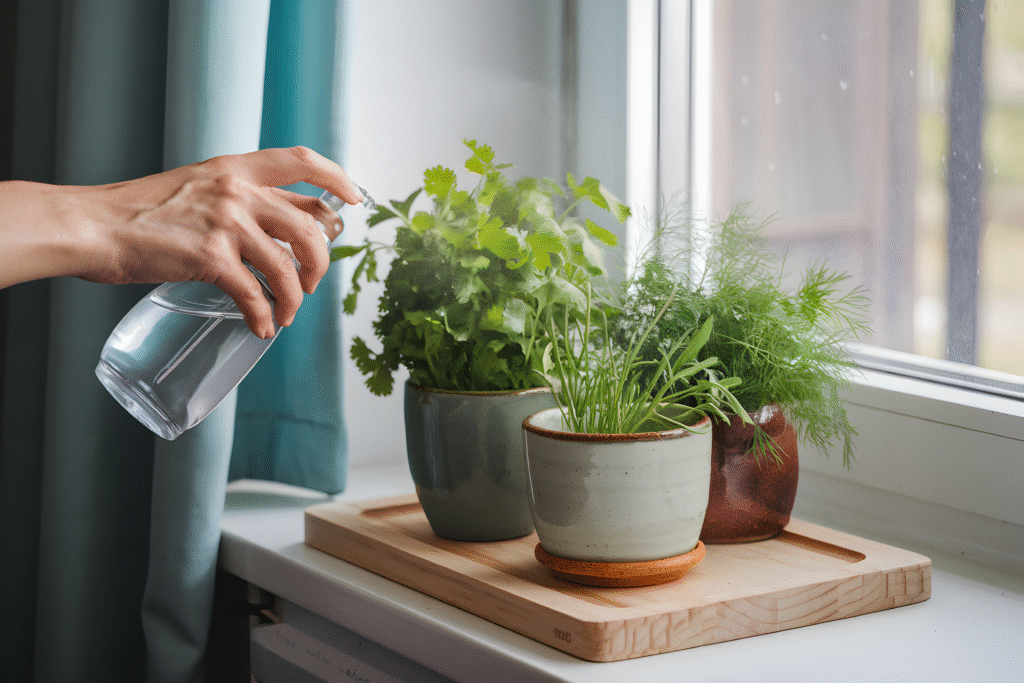
Watering seems easy… until you drown your basil. Overwatering is the top cause of herb death in apartments.
Most herbs prefer to dry out slightly between waterings. Stick your finger about 1 inch into the soil—if it feels dry, it’s time to water. If it’s moist, wait another day.
Watering Guidelines:
- Basil & parsley – Moist but not soggy
- Thyme, oregano – Allow to dry more between watering
- Mint & chives – Like evenly moist soil
Always pour off excess water from saucers. Sitting water causes root rot and attracts gnats.
Consider a self-watering pot or a DIY wick system using cotton rope. These are game-changers if you’re busy or tend to forget watering.
🌿 Step 5: Feed & Prune for Continuous Harvest for small space gardening
In small space gardening, maintenance is your secret weapon. Feed and prune regularly to keep your herbs productive, lush, and compact.
Feeding:
Use a balanced liquid fertilizer (look for 10-10-10 or organic plant food) diluted to half strength. Apply every 2–4 weeks depending on the herb.
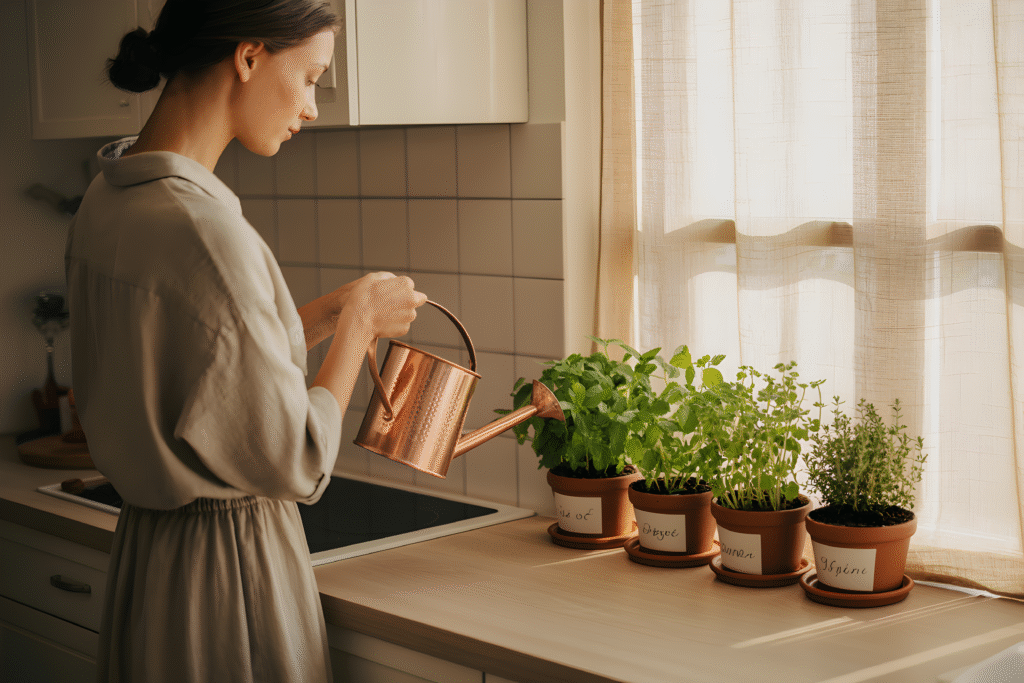
Pruning:
Always harvest from the top! This encourages bushier growth and prevents early flowering. For example, if basil starts to flower, its leaves will turn bitter—so pinch off the buds immediately.
If you let your herbs grow wild, they’ll stretch and weaken. Just 5 minutes of weekly trimming keeps your DIY herb garden apartment healthy and harvest-ready.
🐞 Step 6: Prevent Pests and Keep Your Garden Healthy
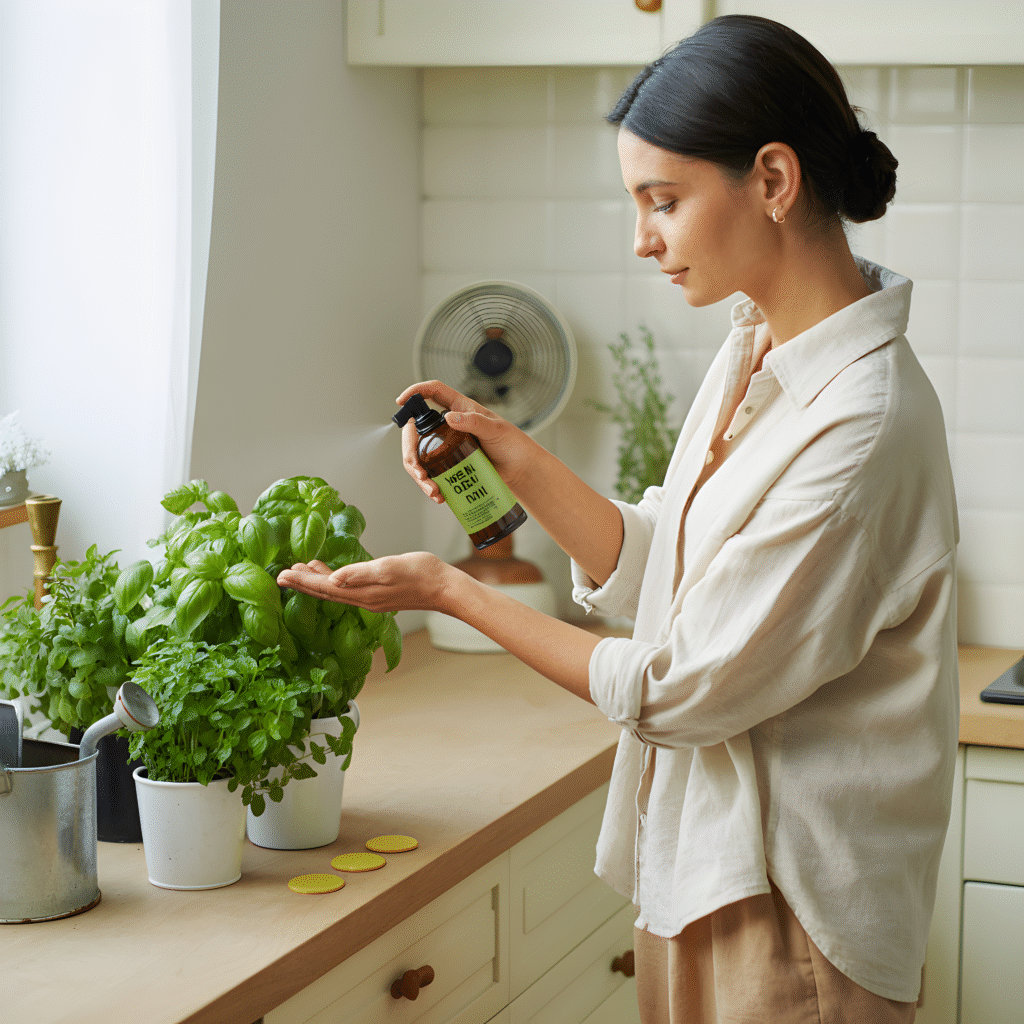
Even indoor herbs can face pests like spider mites, aphids, and fungus gnats. But don’t panic—you can prevent most issues by inspecting your plants regularly and keeping the area tidy.
Common Pest Solutions:
- Neem oil spray – Natural and safe
- Soapy water mist – For minor infestations
- Sticky traps – For flying gnats
- Good airflow – Use a fan if needed
- Quarantine new plants – Before placing near your garden
If you spot pests, act early. Isolate affected pots, clean leaves, and replant if necessary.
🌱 Step 7: Expand, Experiment, and Make It Your Own for DIY herb garden apartment
Once your first batch of herbs is thriving, you’ll find yourself itching to grow more. That’s when the real fun begins.
Ways to Expand:
- Add new herbs like cilantro, sage, or dill
- Build a vertical garden rack for more space
- Create a hanging herb wall with mason jars
- Try a hydroponic herb system if you want no soil
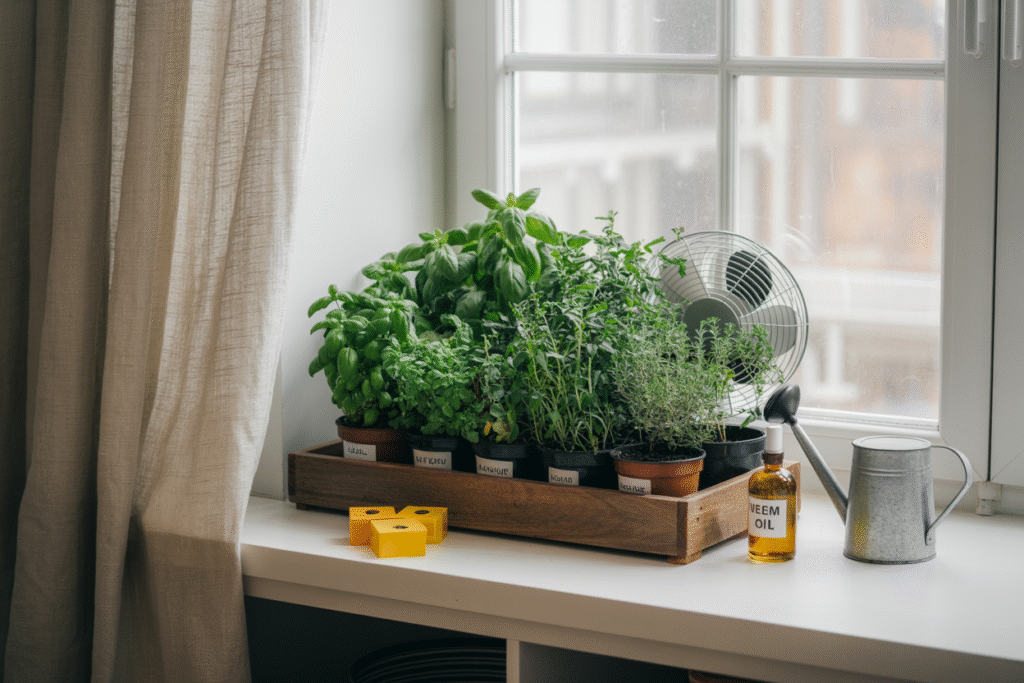
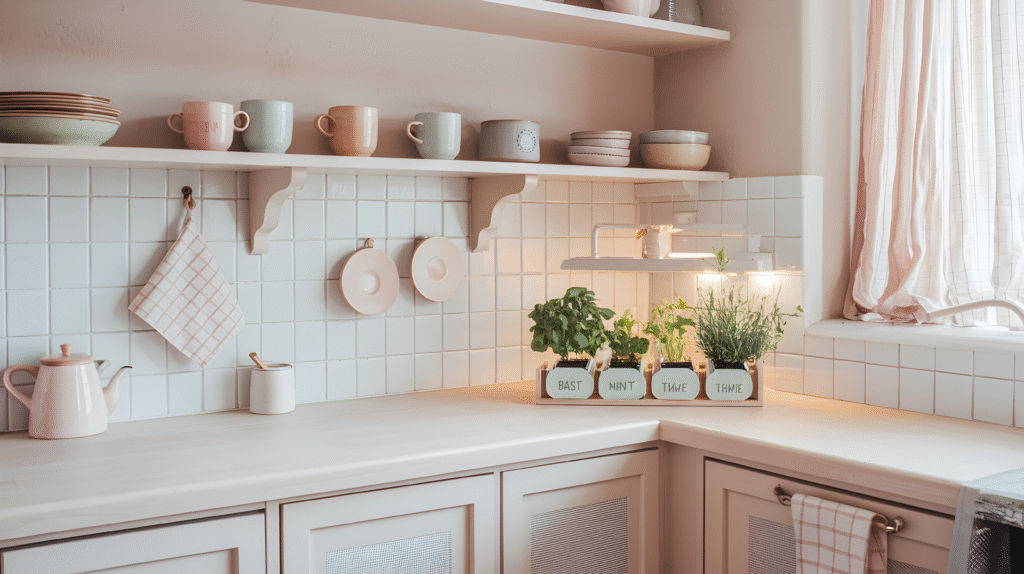
Document your journey! Take photos, label progress, and maybe even start a gardening journal. Your DIY herb garden apartment setup can grow with you over time—and become a lifestyle, not just a project.
🧾 Final Thoughts: Greenery Without a Garden
Urban living doesn’t mean you have to sacrifice nature. With a bit of creativity, some sunlight, and a few smart tools, your kitchen can become your personal herb sanctuary.
Even in the smallest apartment, a few pots of fresh herbs can add beauty, aroma, and a pinch of life to your daily routine.
Now that you know how to grow herbs in your apartment kitchen—from light and soil to watering and harvesting—you’re ready to begin your journey. And trust me, that first homegrown basil leaf in your pasta will be worth every step 🌿
